No knead dutch oven bread
No knead dutch oven bread is truly one of the most hands-off baking challenges you can try. If you’re new to bread making and want to make a loaf of something that is free from crazy preservatives and stabilizers this is a fun place to start . Smear a warm slice with butter or dip it in some olive oil and herbs for a special treat.
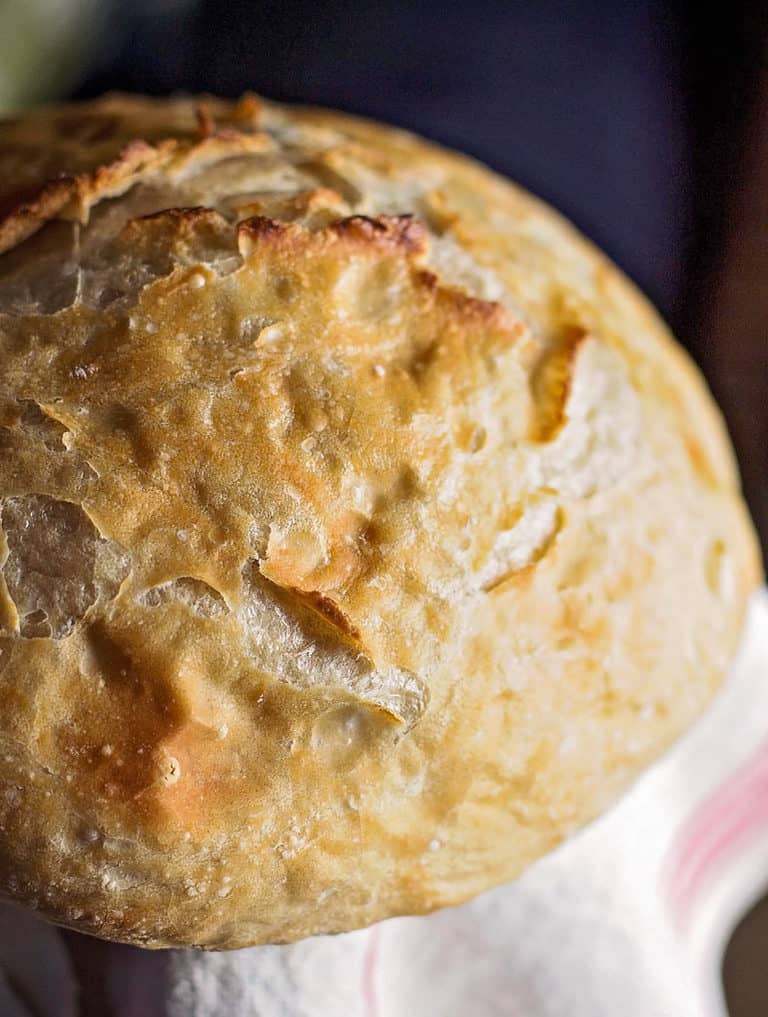
It feels like the most terrifying thing ever–making bread. I can’t tell you how many people I know who just won’t go near it for a lot of reasons:
It’s too hard.
It’s too scary.
It’s too time consuming.
But I will say that you can take it from this girl, who made her first loaf of bread when she was 9 and who has invested up to 26 HOURS in a batch of croissants (but only one time–good Lord that was enough of that) you can make this no knead dutch oven bread even if you don’t know your whisk from your spatula.
When I made this, I dumped the ingredients in a bowl, stirred it up and stood there.
Uhhhh…that was all I had to do besides walk away from it. For a day and a half! I thought something was wrong with the recipe.
But no. It’s true that the longer and slower this no knead dutch oven bread can “prove” if you’re British or “rise” if you’re not will result in a more flavorful loaf of bread. The longer the yeast has to sit and mingle with the flour and salt, the more robust its flavor.
And I know you want to put a flavorful loaf of bread on the table–nothing boring.
This bread looks almost identical to those fancy loaves you buy at the grocery store. In my Kroger those loaves are sitting on a shelf with a big sign that says “PLEASE USE THE TISSUE PAPER TO TOUCH THE BREAD.”
Before I buy a loaf I always wonder what nose-picking three year old had their hands on it before I did.
Or better yet, what nose-picking adult.
Block it out. Just block it out.
All the better to just make it at home.
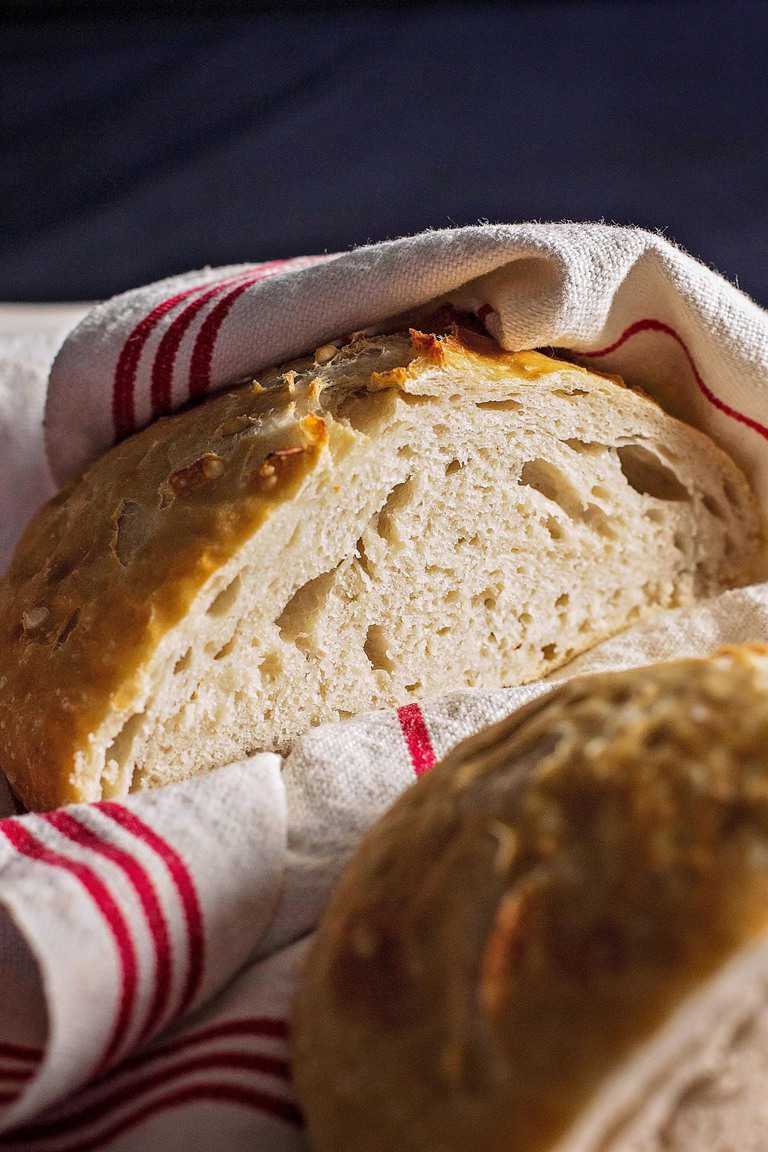
Tips for the best dutch oven bread
- Use active dry yeast here. It comes in a three-pack strip in your baking aisle. You’ll find instant yeast and active dry. Both will possibly work but you really want ACTIVE DRY if you can get it.
- UPDATE: Even though we aren’t using a full packet of yeast in this recipe, I have run into some issues recently with yeast that is simply more aggressive than other brands. I have found that after the 12 to 18 hour resting time my dough is liquefied which means that the yeast has dissolved the gluten structure of the flour. Here’s a yeast brand that shouldn’t give you any problems.
- No need to buy bread flour for this–plain old all purpose will work. If you have bread flour on hand, I’d try it because I’m like that. But the first time through all purpose is fine.
- I’d recommend using sea salt here if you have it. I’m just a big supporter of its clean flavor. If you can’t get it, table salt is okay.
- Remember that even after the long rise this dough is quite wet. Work with it with flour on your hands but avoid putting a lot of extra flour in to the dough. That will keep the texture light.
- I used a 4-quart dutch oven because that’s what I have. If you have one a bit smaller, use that so your bread ends up taller. A bigger pot leaves room for the bread to spread out.
How to make Dutch oven bread step by step


What can I use if I don’t have a dutch oven?
A dutch oven is a heavy deep pot with a tight fitting lid. They hold heat in really well and in this case–they hold in the steam which is necessary for making the golden crust on your bread. I believe a dutch oven is a fundamental kitchen tool everyone should have.
If you don’t have one, you’d have to concoct some sort of air tight, oven safe contraption. You could do a deep pot and seal the crud out of it with aluminum foil…it may not be as crispy, but the flavor should still be there.
What could I add to my dutch oven bread for more flavor?
The sky is the limit! The first thing I think is cheese or whole roasted cloves of garlic. Yummmmm. Of course fresh herbs would also be great. Rosemary, olive oil, or a few tablespoons of my homemade ranch dressing mix would add some zing. If you add any of these ingredients in to your dough keep in mind that they can all slow down yeast development so if you need to let yours sit longer than 18 hours–even 20 to 24–it will be okay to do that.
Make a loaf of traditional loaf bread with this recipe.
This recipe is inspired by my friend Jo Cook’s version of crusty bread.
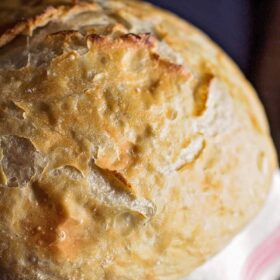
No knead dutch oven bread
Ingredients
- 3 cups all purpose flour
- 2 teaspoons flaked sea salt OR 1 3/4 teaspoons table salt
- 1 teaspoon active dry yeast
- 1 1/2 cups warm water
Instructions
- In a large bowl, mix the flour and salt and stir to combine. Add the yeast and water to the flour and stir with a spoon until a sticky dough forms and no pockets of raw flour remain. (If you wanted to add cheese or herbs, do that here and stir them in.)
- Cover with plastic wrap and set aside for 18 to 24 hours. Until the dough more than doubles and has lots of tiny bubbles in it.
- When you're ready to bake, preheat the oven to 450 and put your 5 quart (or smaller) cast iron pot and the lid to heat up. Heat for 20 to 30 minutes.
- When the pot is ready, remove it from the oven and set aside. Sprinkle the dough with a tablespoon of flour or so and flour your hands well. Make a fist and punch right into the middle of the dough to flatten it. Then working gently, shape the dough into a ball. Flour your hands as needed, but avoid adding any more flour to the dough. It will still be sticky. That's okay.
- Sprinkle another tablespoon of flour inside the bottom of your pot and then set the dough inside. Cover with the lid and bake 30 minutes, then remove the lid and bake an additional ten. Transfer to a wire rack to cool.
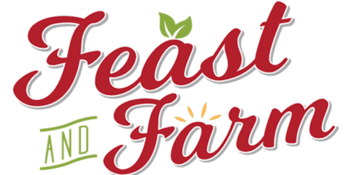
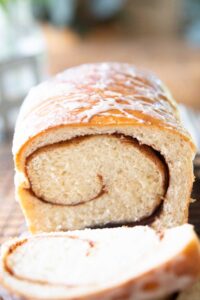
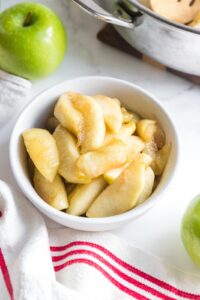



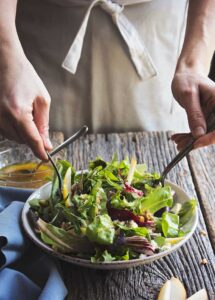
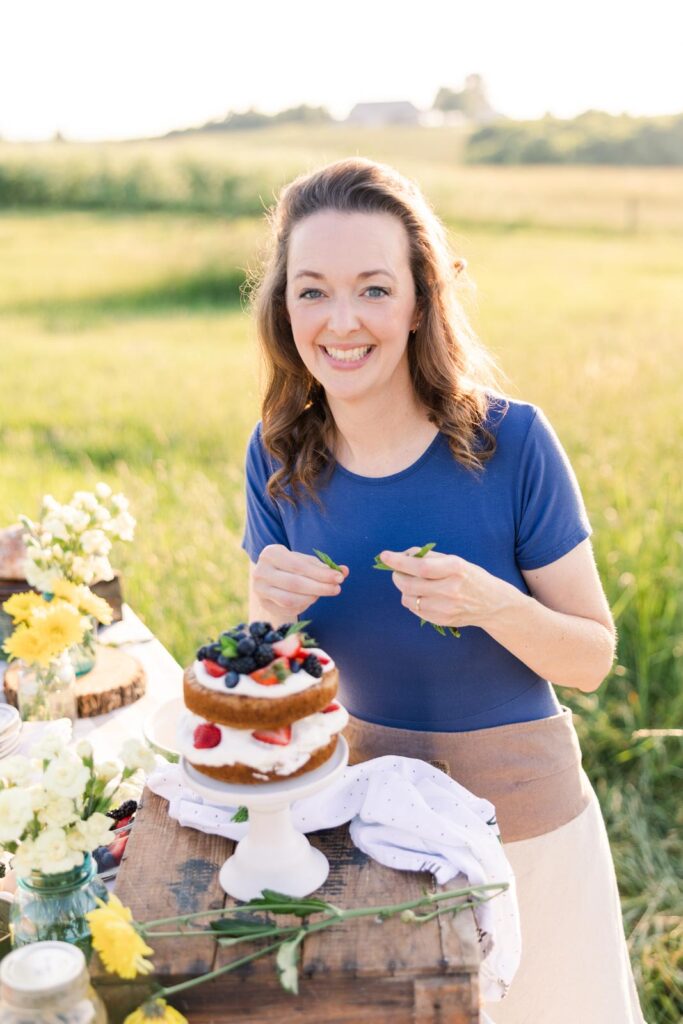
I make this bread all the time and add flare here and there. Garlic, rosemary, thyme, and all sorts of stuff! Love it!
Do I leave it to rest on the counter? In the Fridge?
Hey Maigen, just on the counter at room temperature. –Rachel
Thank You !!
As a guy in his last 50’s who has cooked all my life, including Thanksgiving and Xmas dinners, but has been intimidated by bread for some reason, I Thank You and my wife Thanks You. I did my first “round” loaf today and as soon as I finish this comment i’ll be setting up another to rise for tomorrow – maybe with some Italian seasonings.
Thanks Again
Tim
Bread just takes practice Tim, and don’t feel bad: it seems like everyone is scared of it. This recipe is a great place to learn and it’s delicious so you’re off to a great start. When you’re ready to try traditional bread, I have a great YouTube video that’s been really helpful for a lot of my readers you can check out. You can check it out here when and if you get ready: https://www.youtube.com/watch?v=V-1yO6ZHnlQ –Rachel
I used bread flour with regular table salt. Results were awesome but a little too salty. Would the bread flour have caused the added saltiness? Otherwise this was a really easy and delicious recipe! I’ll definitely make it again.
Hey Tina, so yeah–the table salt was the problem. I know I put a suggested amount on the recipe for using table salt but here’s the issue: salt varies so much in size, density and actual saltiness from brand to brand, it can be super tricky. Flaked sea salt is a much more delicate flavor and not nearly as “salty” as the condensed, factory made table salt most Americans use. I would highly recommend getting some flaked sea salt for your next batch and going that route. The problem wasn’t with the bread flour, it was just the huge variation in the size of the salt granules and the type you used. –Rachel
Please fix the recipe time, it is misleading to say total of 50 minutes when there is a 24 hour rise.
I’ve updated to add a resting time.
Gotta try this bread recipe… bread and butter is my weakness…
Mine too Linda! This one is really easy and practically hands off too–it’s a great one to make! –Rachel
Can you double the recipe in order to put it in a 7 quart cast iron dutch oven?
Hey Gina, I haven’t experimented with doubling the recipe. When you bake, it’s not like you’re just doubling a pasta dish–it’s science and it doesn’t always work. You’re welcome to try. I’ll leave that decision up to you. –Rachel
Is there a whole wheat version of this recipe?
Hi Tim, not that I know of. I’ve never tried it with whole wheat flour but you’re welcome to try Googling for a version. Once you figure out the ratio to swap whole wheat for white flour you should be fine. 🙂 –Rachel
Rachel, when do I add the oil to the Dutch oven? Won’t the bread stick to the pan??
Hey Rebekah, there’s no oil in the recipe or in the instructions. 🙂 So nope, because the pot is pre-heated, it will start to cook immediately and will come right out of your pan no problem after it’s baked. Sticking occurs when you put a food in a cold/cool pot or pan and then heat it up. If it makes you feel any better, you can line the inside of the pot with some parchment paper before you put the dough in but it’s fine to skip it. –Rachel
A true favorite!